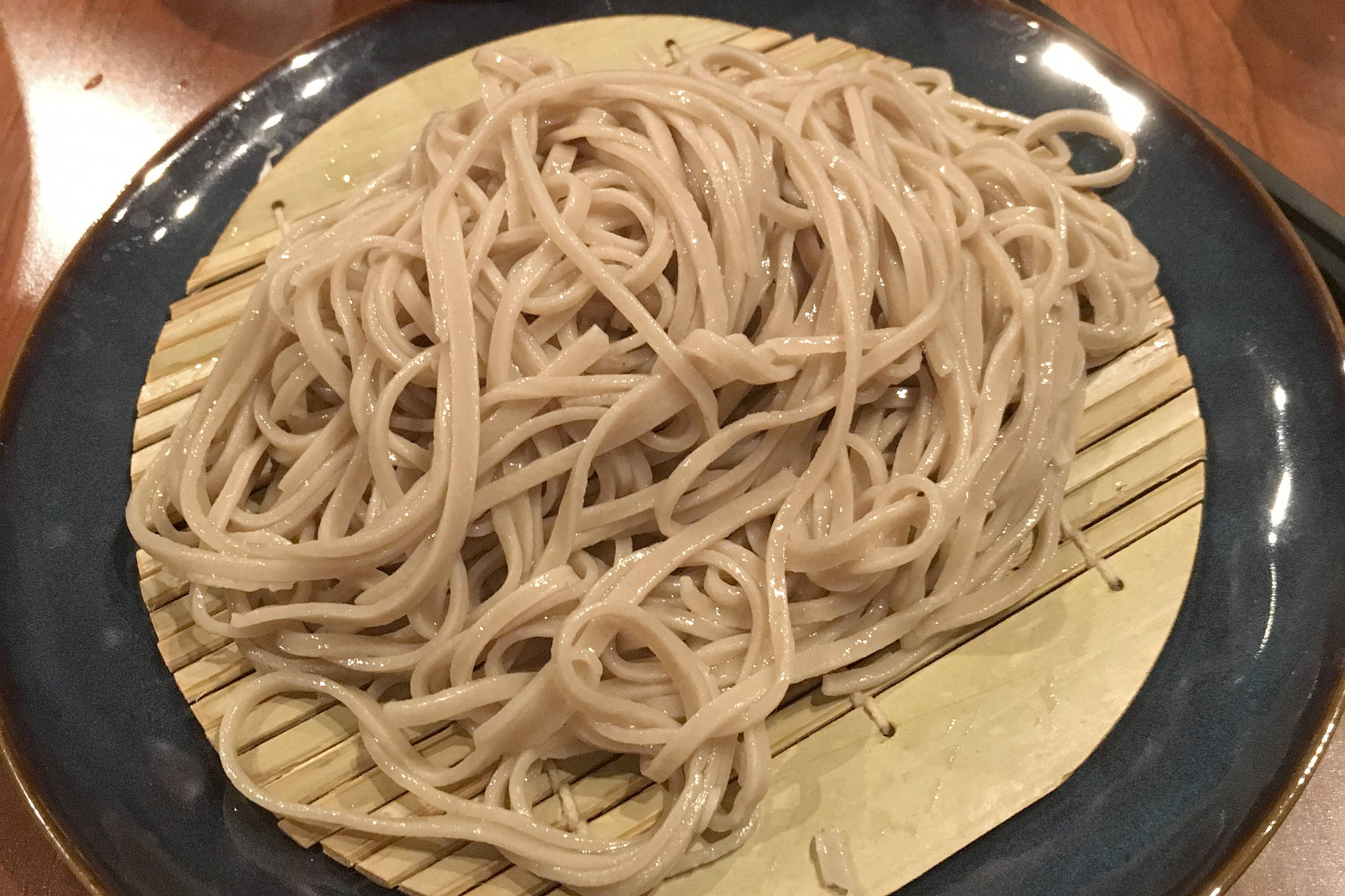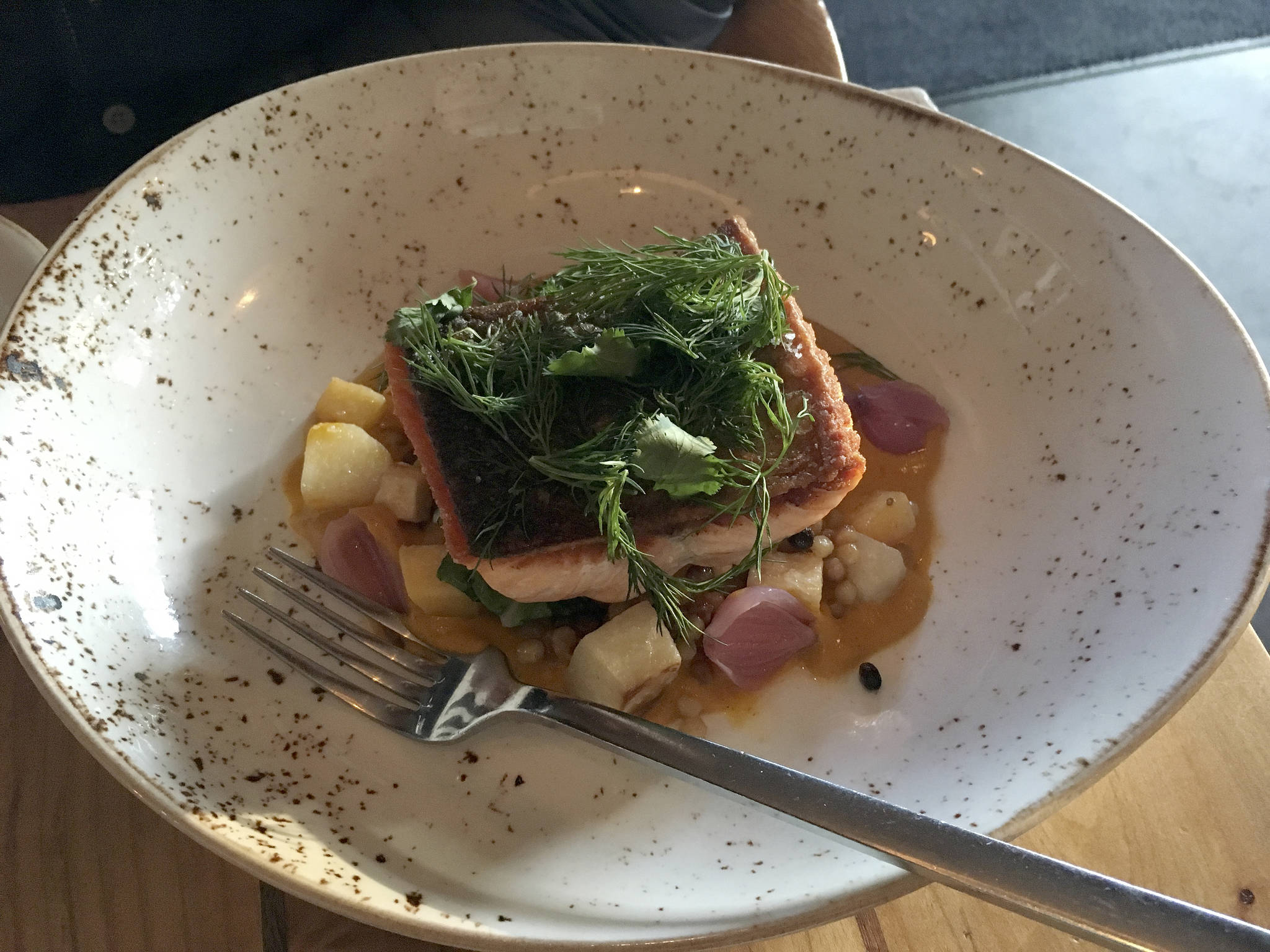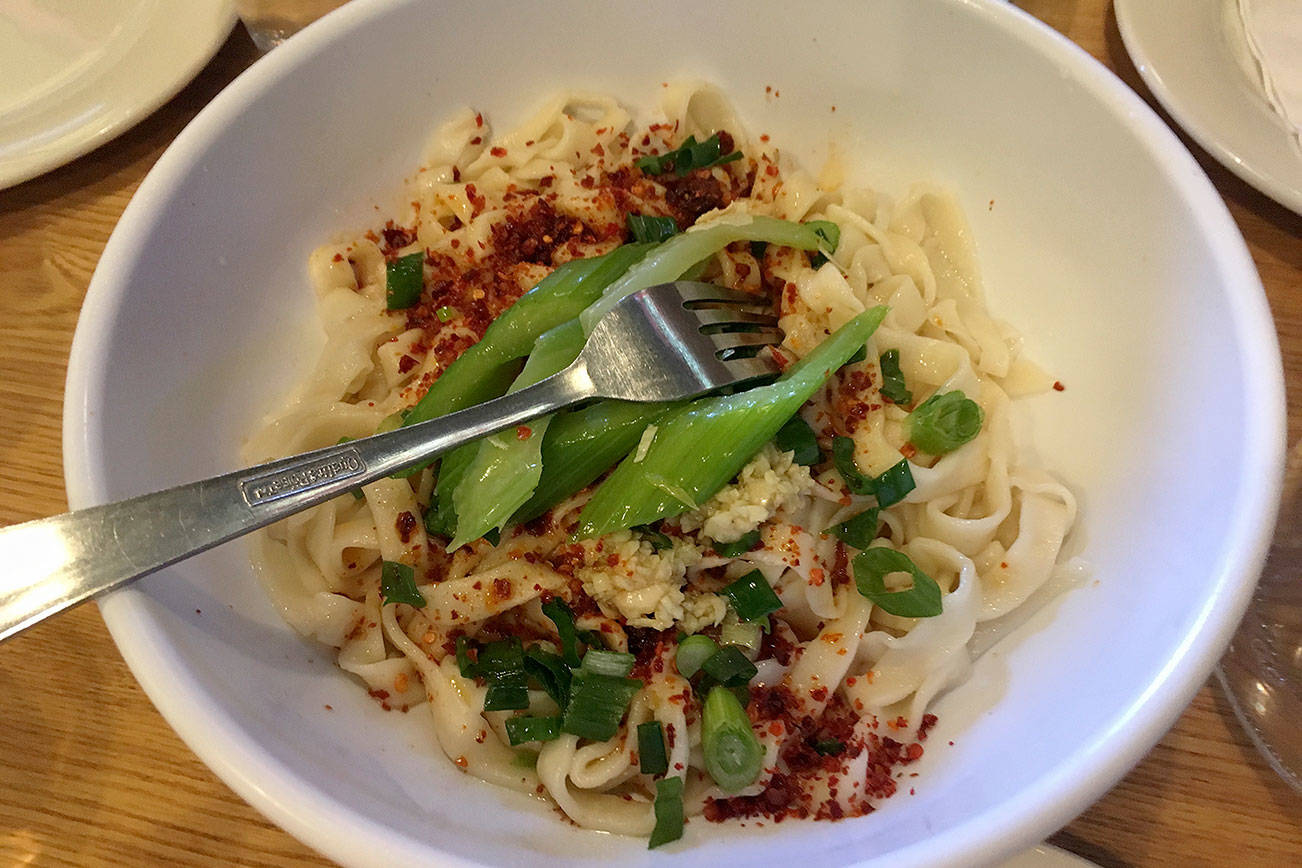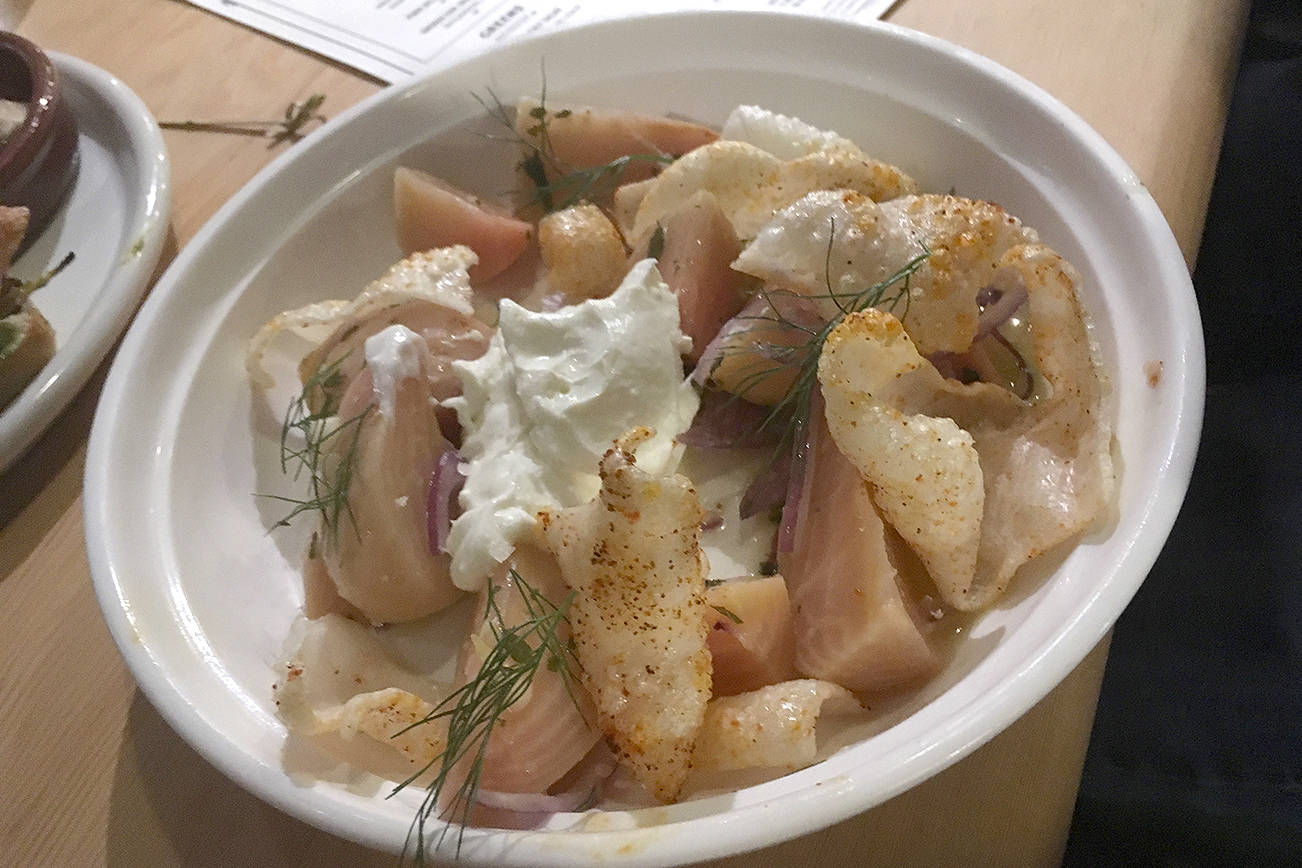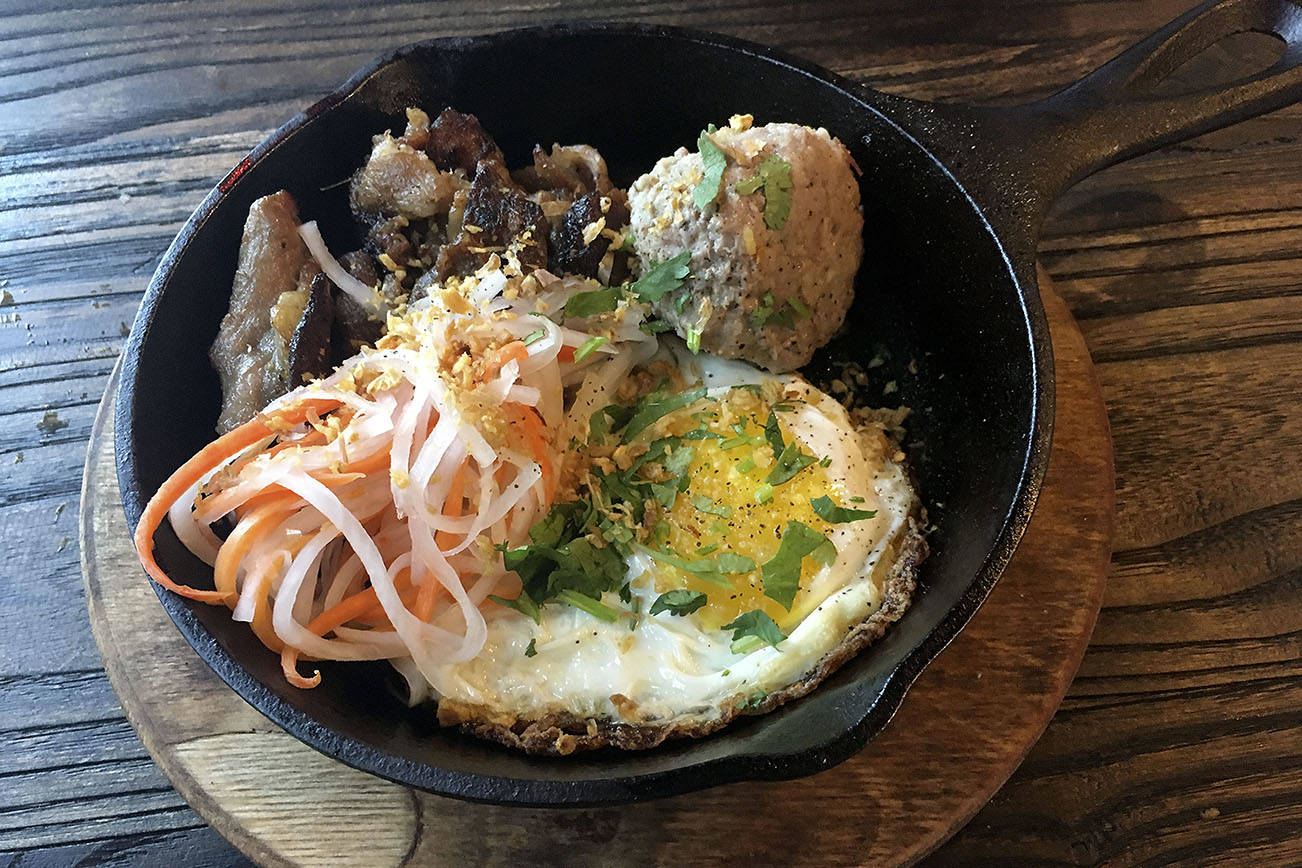There was a lot of angst in the Seattle food world when Miyabi 45th closed for a few weeks last year and then reopened without chef Mutsuko Soma. The restaurant was known and beloved for its unique and lovingly crafted Japanese delicacies, chief among them homemade soba noodles. The noodles are still there, but not as the focus of the menu. Not to worry, though. Chef Soma has brought them to her new spot, Kamonegi (1054 N 39th St., 632-0185), where they, along with tempura and sake, are once again the star of the show.
Located on a quiet street in Fremont, the restaurant feels like the kind of place you’d find out about only from a friend in the know—a lucky secret you’re thrilled to be let in on. From the moment you walk into the charmingly crooked space with a small, elevated, triangular-shaped dining room, you’re greeted enthusiastically in Japanese by the staff, chefs included. A tiny counter at the kitchen seats a handful of guests, the dining room about 15. The windows are outfitted with Japanese-style panes; the wooden, honey-colored banquettes are a beautiful pattern of varying-sized planks; and two modern watercolor paintings, one of a fish, add striking notes to the otherwise Zen-like space. Above the open kitchen hang bamboo implements for milling buckwheat, the main ingredient in the signature soba noodles.
While ramen noodles get more than their share of buzz, soba are the forgotten cousin. Handmade from 80 percent buckwheat flour, they are thin, flat, and wheat-colored with a subtle nutty flavor, and they take to broths and toppings as easily as ramen—better, perhaps, since their flavor is rarely compromised. At Kamonegi, you can experience soba in a multitude of ways: served cold with a warm dipping sauce (seiro-style), hot in a hot broth (nanban), or cold in a chilled broth with a variety of toppings like a noodle salad (bukkake). I opted to try the signature kamonegi in the nanban style. In the dashi-based broth lie several slices of rare duck breast, thick slices of leeks, duck tsukune (a meatball), and mitsuba, often called Japanese parsley, but with a slightly bitter, celery-like flavor. The duck breast in particular is succulent and brings a richness to the otherwise delicate soup. The noodles, however, are better appreciated in a seiro dish like the shrimp bisque soba, a special of the evening. Served in a pretty jumble atop a bamboo plate, they await a dunking in an umami-packed, orange-hued bisque redolent with the flavor of prawn and scattered with pieces of nori and tempura flakes. Waiting like a prize down deep lies one large tempura-covered shrimp. The simple act of pinching the noodles between your chopsticks, dipping them, then taking a bite, forces you to slow down and in doing so appreciate the flavor of the soba.
Besides noodles, the restaurant offers an assortment of tempura-based dishes as well as unique appetizers. A salad of haricots verts and bosc pear rests on a thin, creamy, sweet, and nutty layer of “tofu tahina” and is dressed with a sesame vin, pine nuts added for crunch. It’s light but loaded with flavor, delicate yet hearty. The braised pork belly appetizer was an unexpected delight; I tend to shy away from pork belly due to its unapologetic fattiness. But here the pieces don’t fall apart into a gelatinous mess, and the spicy kimchi with chunks of persimmon brings a sweet, spicy tang that blazes through the fat with delicious authority. Kudos, too, for using an underrated fruit in a perfect application, soft and baked.
As for the tempura, we tried two of the seven offerings. In one, tempura-coated eggplant and purple daikon float in a bowl of dashi along with tangles of chanterelles. We were told to eat the tempura with chopsticks but spoon up the mushrooms and broth. It’s an interesting dish that I’d need to get used to; the broth turns the tempura to a soggy texture that felt antithetical to the fried crispness that tempura represents. That said, the earthy flavors worked well. The anago (sea eel) was more successful, and I’ve never had battered eel. The fry is light and golden and keeps the eel moist and tender. A squeeze of lemon and a pinch of curry salt made each bite a hit. It’s like a Japanese fish and chips, and I’d gladly go back for this alone. I’d also return to try the satsuma yam with buckwheat honey and gorgonzola, a seemingly non-traditional twist on tempura.
Since chef Soma is also a certified sake sommelier (yes, that is a thing), there’s plenty of sake to choose from. Don’t be intimidated to ask for help choosing. In fact, the entire experience at this restaurant depends upon the knowledgeable staff to help elucidate the whole menu, particularly when it comes to their trademark soba. As someone who tends to know a lot about the ingredients and cooking techniques at restaurants, I thoroughly appreciated the education, and being left in the competent hands of Soma and her crew.
nsprinkle@seattleweekly.com
